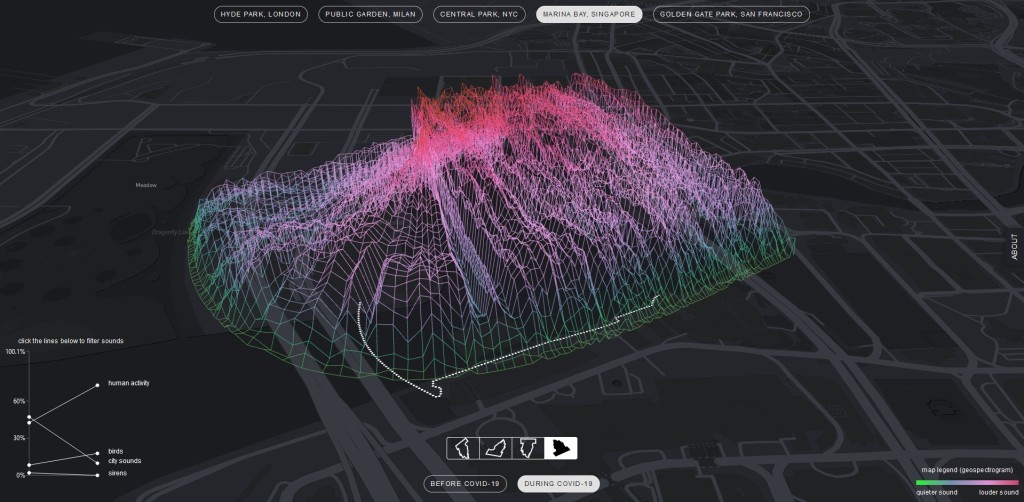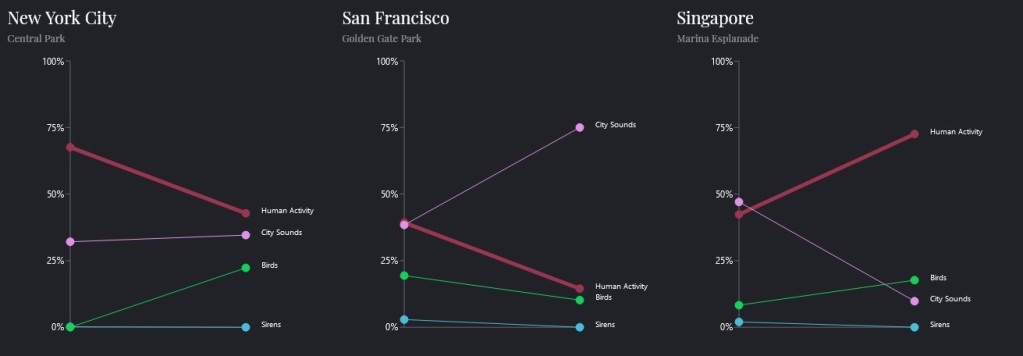At the meeting point of humans, nature, and the urban landscape, parks in five cities paint a fascinating portrait of transformed lives.
MIT’s Senseable City Lab looked at park environments in five cities – San Francisco, New York, London, Milan, and Singapore. As the researchers describe it:
“Parks bring together nature and the city. While activity in parks was the same—sometimes greater than before—what we heard changed dramatically.
Across city parks, ambient sounds overtook crowd chatter, sirens cut through background noise, and music sharply declined.”
Those transformations are sometimes unexpected, though. In Milan and Singapore, there was more human sound during lockdown. Birds could be heard more clearly in most cities. But the data reveals both the unique variations during the lockdown, and the different sonic fingerprints of each cityscape before and after.

The visualizations are quite fun to play with (plus they allow you to zoom in on specific threads of sound). I actually think the recorded sound material itself may be more useful than any particular patterns recorded in the data, especially as these cities appear to have had such different results. (Here in Berlin, siren noise went up substantially in the park next to my flat, I presume because Germany devoted extra money to police enforcement. It was pronounced enough that a young girl in the neighborhood began singing the police siren melody at regular intervals each day.)

Check out the full report and interactive Web app:
http://senseable.mit.edu/sonic-cities/
For the birds
The simple line graphs of birds sound from the MIT story likely mask a much more complex story about the relationship of birdsong to ambient environment – including during this change.
Perhaps the most interesting thing is that birds themselves have been observed to sing louder when in urban environments. So if birds sounded louder during your lockdown, it’s actually likely they were singing more softly but had less interference from background noise. (I heard an ornithologist once liken it to what happens when you have to shout in a crowded bar.) For instance:
On the relation between loudness and the increased song frequency of urban birds [Animal Behaviour]
The urban landscape can eventually impact birdsong itself and, as one study in Warenemunde, Germany showed, can produce intricate relationships between human environment and song by location.
(Also, oddly enough, a study in Science of the Total Environment – awesome journal name – suggests that you can make it seem like a soundscape is quieter and more pleasant by adding more natural sounds.)
Humans obviously don’t hear or communicate like birds, but I do wonder about how our soundscapes impact our musical expression, too.
Now we’ll have to listen to what happens next.